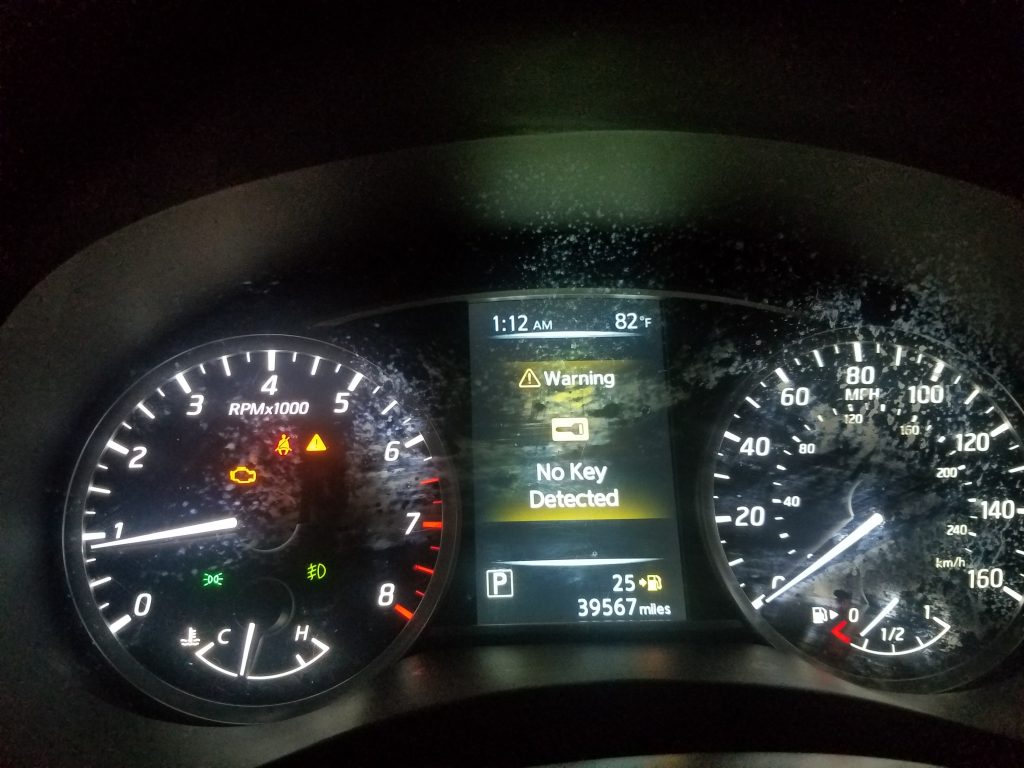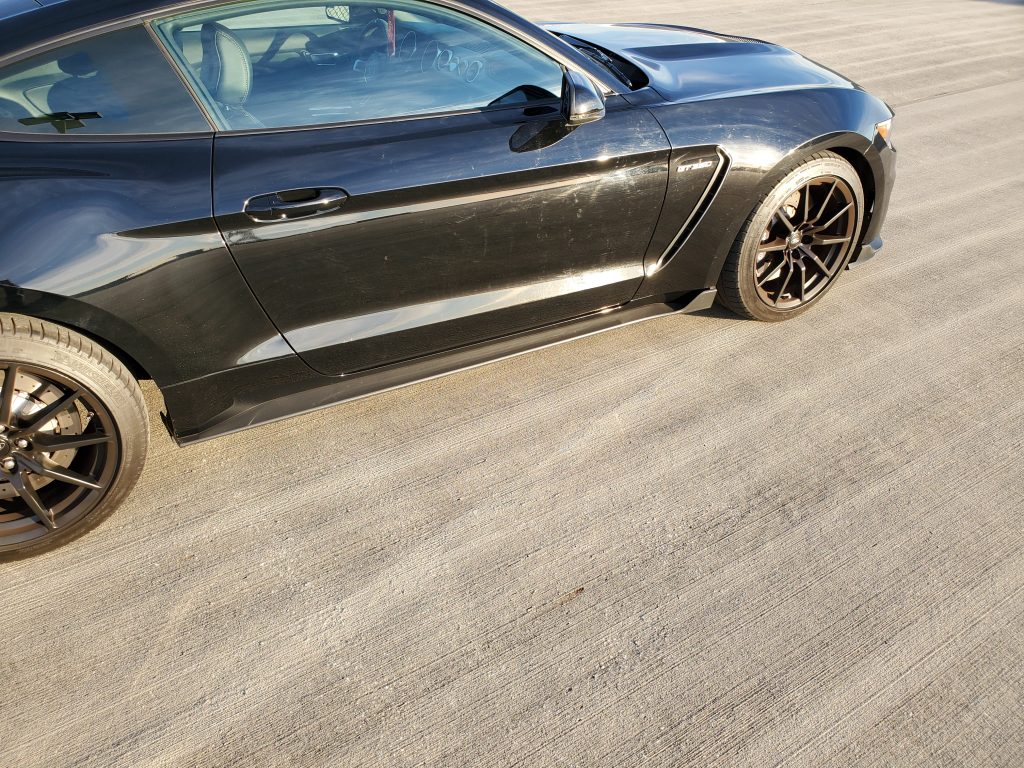Importance Of The PH Scale To Detailing : Part 2 – Debunking Wisetales Of Using Household And Cheap Auto Detailing Cleaners
by Rodney TatumThis is part 2 of a three-part series in which I cover the PH Scale. Click here to check out all of these articles!
Household glass cleaners, due to their ammonia content, has been known to destroy window tint. The use of a popular household cleaner also damaged this navigation screen.

Let us take a deeper look into what makes your common household cleaners so effective at performing the jobs they were intended for.
When trying to clean a road, the oven, or a bathroom our priorities will not be the same. We care to an extent about the gentleness of a cleaner but our focus will tilt more to what is the most aggressive cleaning option available. The material you are cleaning will likely be less sensitive. I also admit I am less concerned with bathtub micro marring than I am with the marring of car paint. Toilet bowl cleaners will tend to be extremely acidic. Oven degreasers will be extremely alkaline. I would hope you would use something gentler than a rake on your car. You should have the same thought process with chemicals. I would, of course, hope you would NOT use bleach to clean disinfect your car.
When chemists are trying to formulate a product to address the conditions of our bathtubs and ovens preserving delicate automotive vinyl, trim, leather, and window tint are the furthest thoughts from their minds. You know those bathroom cleaners or kitchen degreasers that cleans gunk really well. The manufacturers are not thinking of how scratch sensitive paint is nor do they care about chemical stains or permanent adverse reactions of products meant to clean concrete.
Even in the automotive realm, there are more expensive versions of similar products that on the surface perform similar tasks. Why do I use certain products that cost more that may also clean less effectively than automotive cleaner B? My answer: the product is safer to use not only on what I am working on but at the same time the SURROUNDING areas!
Those amazing cleaners found for about $1 that do an even better job than those “overpriced” dedicated car cleaners often work with a caveat. Many times on detailing enthusiasts forums, business pages, and other social media posts an inquiry is made about a very cheap over the counter all-purpose cleaner. Many people will boast how great or superior a product is strictly because of its cleaning strength. Many of these products work! They work with consequences on the wrong material. A big part of protecting your car is knowing what you are cleaning it with or knowing what your detailer may be using. For every celebration of how much bang for a buck someone can get out of a product, there is a story about a damaged dashboard, discolored door, and damaged navigation screen from the reckless use of a cheap all-purpose cleaner.
You don’t have a Porsche or a Maserati! You are not detailing supercars! You should be just as concerned! The fabrics and plastics of your typical vehicles we see driven daily, because of manufacturing cost-cutting moves, are usually made of cheaper material (cost-cutting moves) than your luxury vehicles. This means those same carpets and plastics are even more easily damaged. I am often more anxious around a Honda than a Porsche for this same reason. When you grab a product from an auto supply store and ASSUME you can spray it anywhere on your car you are doing this. When you hear the word APC, short for the word ‘all-purpose cleaner’, and assume it means all-purpose in the LITERAL sense you are doing the same thing. Even when you are using an automotive all-purpose cleaner and unknowingly spray or put yourself in a position to (by accident) mist in unintended sensitive areas, that is exactly what you are doing.
This may not be the best description in part due to the VARIETY of cosmetic damage on this car’s paint (below), but this is a common example of chemical damage that I see from the use of the caustic products in an effort to achieve a cheap and fast result.

This car was prepped/damaged at the dealership like this for sale. The owner took the vehicle to another detailer for a ceramic coating. The owner of the vehicle mentioned to me the detailer as well as the manager of a very reputable body shop, whom he went to for a second opinion, told him it was some sort of chemical damage as a result of negligence in the dealership prep work. He would later reach out to me for my opinion. My very educated guess of what specifically happened; in an effort to quickly and inexpensively remove brake dust from the wheels a very strong acid was used. This product was not rinsed thoroughly and quickly enough to prevent to some extent damage that may require a repaint. Likely the chemical staining, especially noticeable by the wheels and lower part of the vehicle, was a product of overspray.
One of the reasons more expensive color changing wheel cleaners like Iron X or just plain car soap and water are popular options for higher-end professionals is that many of these products (not necessarily all) are listed as PH neutral. But for some dealerships and high volume shops wheel acid is still commonly used. Hydrochloric Acid, an ingredient in wheel acids, an also be found in your toilet bowl cleaners.
Hydrochloric Acid and Sodium Hydroxide are very caustic. Caustic chemicals burn, dehydrate, and corrode surfaces they touch. Caustic chemicals spike the PH of products to very high levels. They produce strong cleaners but are harsh not only for a car but also can be for your health. Often these harsh chemicals are substituted in place of more expensive chemicals to keep the price of a product down. Sodium Hydroxide may be found in very cheap all-purpose cleaners. Sodium Hydroxide is also found in commercial drain and oven cleaners.
I have seen black vinyl several times on older vehicles where areas (prone to more frequent cleaning) looked visibly more bleached than others.
Sodium Hydroxide vs D-Limonene
D-Limonene is a compound that comes from citrus oils. It is used in some high-quality all-purpose cleaners to contribute to their alkaline cleaning power. It is not a product that spikes the alkalinity to caustic high levels, unlike an alternative like Sodium Hydroxide. D-Limonene is one example but not the only high-quality alternative to Sodium Hydroxide.
When people ask me what is detailing or what is the significance of being knowledgeable about products used. In the part of the definition of detailing what I am really am describing is finding a way to release the strong bond that unique foreign substances have from uniquely delicate and sensitive car parts in the safest way possible. There are many concoctions that can yield a result but may not be appropriate in a situation or used appropriately. To me producing or investing in products that overlook this with the explicit intent of yielding a dramatic result in the cheapest fashion possible is the furthest thing from detailing.








No comments yet. Be the first!